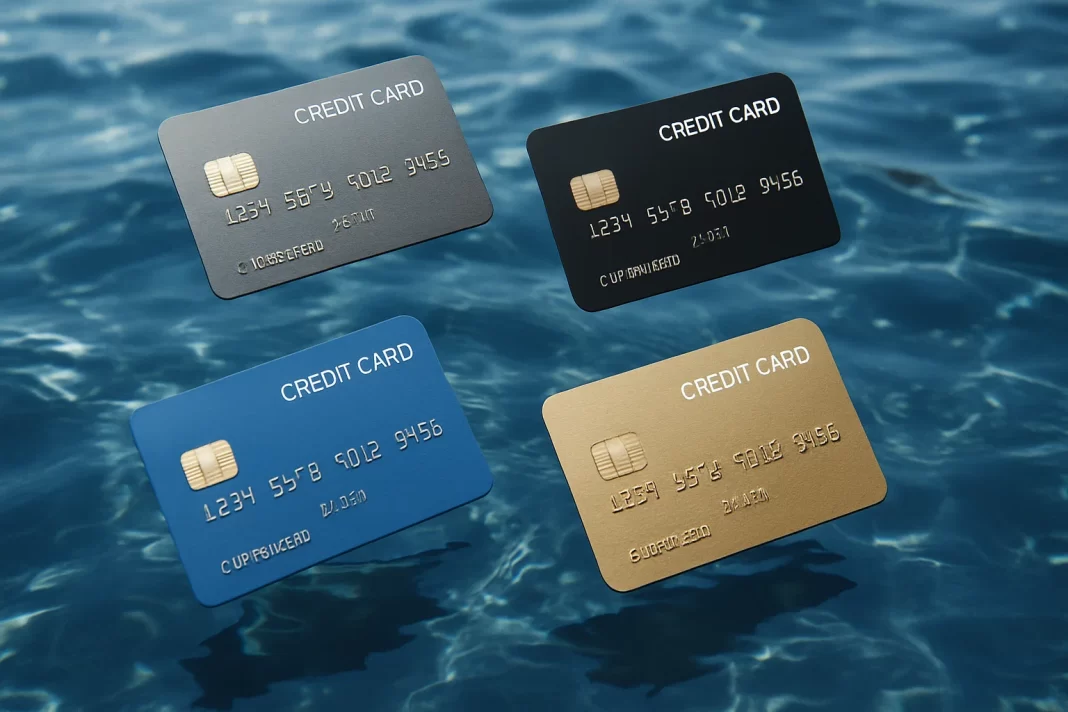Americans are living on plastic — and they’re not slowing down.
The average U.S. adult now holds 3.96 credit cards, according to data from Experian. That’s nearly four cards per person, a number that’s steadily creeping higher year after year. What used to be a wallet of convenience is now a deck of debt, rewards, and risk.
For many, having multiple cards is a strategy — one for groceries, one for travel perks, one for balance transfers, and another “just in case.” But for others, it’s a desperate attempt to stay afloat as inflation and high living costs eat through paychecks.
“It’s not about luxury — it’s about survival,” said Tiffany J., a 39-year-old single mom from Ohio. “I’m rotating cards just to pay my bills.”
The Rise of the Plastic Lifestyle
Americans once viewed credit cards as backup plans. Not anymore. In 2025, they’re full-blown financial tools — and status symbols.
-
Perks drive demand: Generous sign-up bonuses, travel rewards, and 5% cash-back deals lure consumers into opening card after card. Some cards even offer VIP lounge access or elite hotel status — luxuries that appeal to a generation glued to social media flex culture.
-
Apps and algorithms: Modern fintech apps make managing multiple cards easier than ever. With reminders, auto-pay options, and balance optimization tools, users feel more empowered to juggle several accounts.
-
Credit score hacks: Believe it or not, having more credit cards — if used responsibly — can actually boost your credit score. By increasing available credit and lowering utilization, users game the system in their favor.
“We’re in the era of ‘credit stacking,’” said one financial expert. “Consumers are optimizing cards the way investors optimize portfolios.”
But the Debt is Getting Ugly
The plastic party has a steep price tag.
As of early 2025, total U.S. credit card debt has soared past $1.13 trillion, according to the Federal Reserve — the highest on record. The average balance per person? $6,501, and rising.
Even worse: the average interest rate is now a punishing 20.68%, thanks to aggressive rate hikes by the Fed.
That means the cost of carrying debt is crushing. A $6,000 balance at 21% APR can rack up nearly $1,200 in annual interest — and that’s if you don’t fall behind.
“I opened a second card to pay off the first one,” said Chris L., a 28-year-old barista from Denver. “Now I’m just chasing due dates. I don’t even know what I owe anymore.”
Who’s Carrying the Most Plastic?
Experian’s generational breakdown shows a clear pattern:
-
Boomers (59–77): 4.8 cards on average
-
Gen X (43–58): 4.5 cards
-
Millennials (27–42): 3.5 cards
-
Gen Z (18–26): 2.1 cards
Boomers lead the pack — but younger generations are catching up, fast. Many Millennials and Gen Z consumers say they’ve opened new cards specifically for travel rewards, cash-back promos, or credit-building opportunities.
In fact, over 30% of Americans opened a new credit card in the last 12 months, according to TransUnion.
But with those shiny sign-up bonuses come real risks: missed payments, rising balances, and — in some cases — total financial chaos.
The Rewards Game Isn’t Always a Win
For savvy users, the “points game” feels like free money. But studies show nearly half of all reward points go unredeemed. Meanwhile, Americans are paying billions in interest and late fees.
“People brag about their Amex Platinum cards like it’s a Rolex,” said one NYC-based financial coach. “But ask them how much they’ve paid in interest this year — suddenly it’s crickets.”
And don’t forget fees. Annual fees for premium cards can run $400–$700 or more. If you’re not traveling or using the perks aggressively, that’s just money out the door.
The Bottom Line: Americans Are Overextended
The U.S. economy might be growing, but households are feeling the squeeze. Credit cards have become a financial safety net — but that net has holes.
With inflation still high, wage growth uneven, and housing costs through the roof, more Americans are leaning on credit to fill the gap. And that gap is growing.
“We’ve built a culture that glorifies spending and hides the consequences,” said one debt counselor. “Everyone wants the rewards, but no one talks about the risk.”
So, next time you pull out that fifth credit card to chase another bonus or cover a surprise bill — just remember: the average American already has four.
How many do you really need?
By the Numbers: U.S. Credit Card Landscape in 2025
| Metric | Value |
|---|---|
| Avg. credit cards per adult | 3.96 |
| Total U.S. credit card debt | $1.13 trillion |
| Avg. individual card balance | $6,501 |
| Avg. credit card APR | 20.68% |
| % of adults with a credit card | 84% |
| Cards opened in past 12 months | 30% of consumers |





